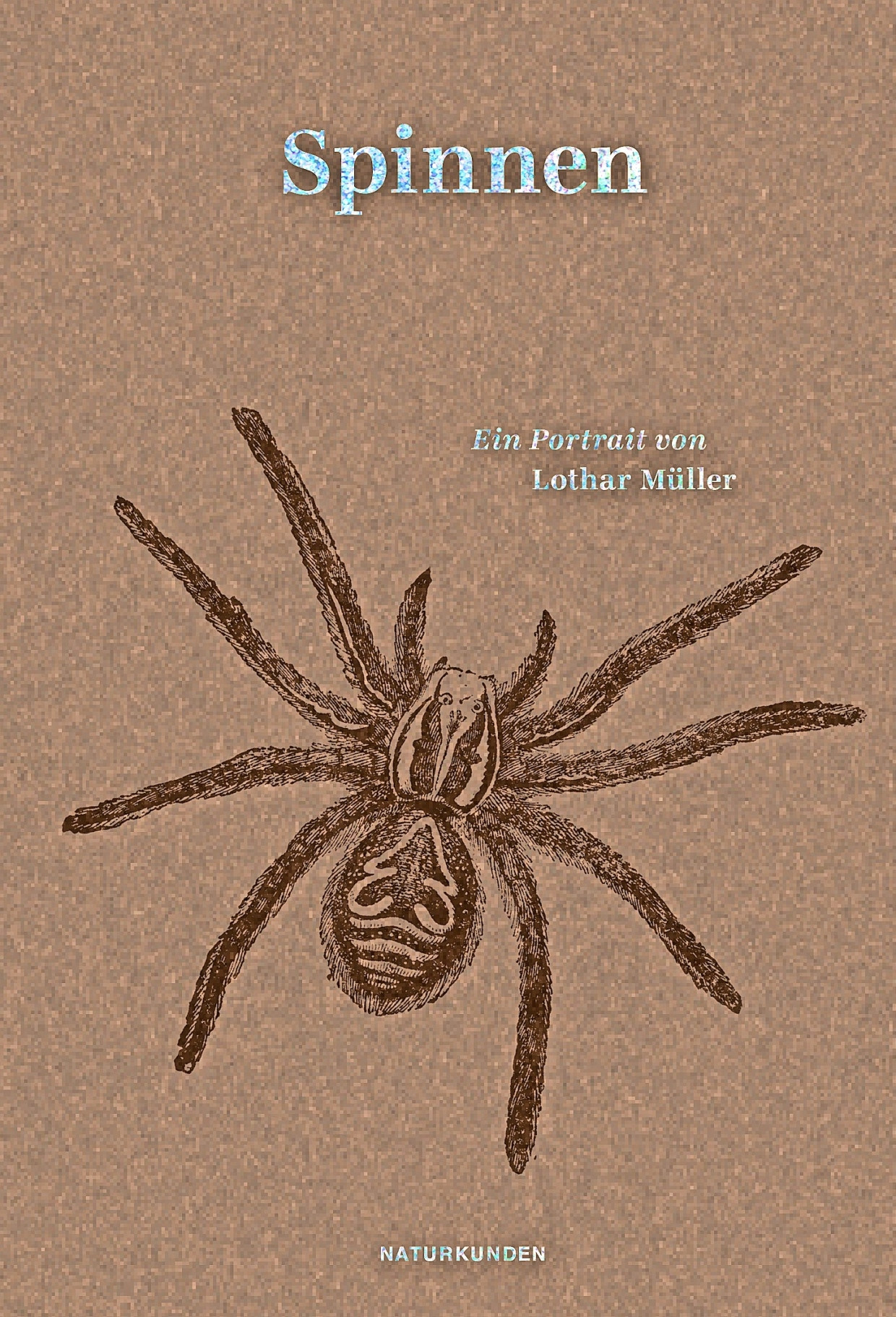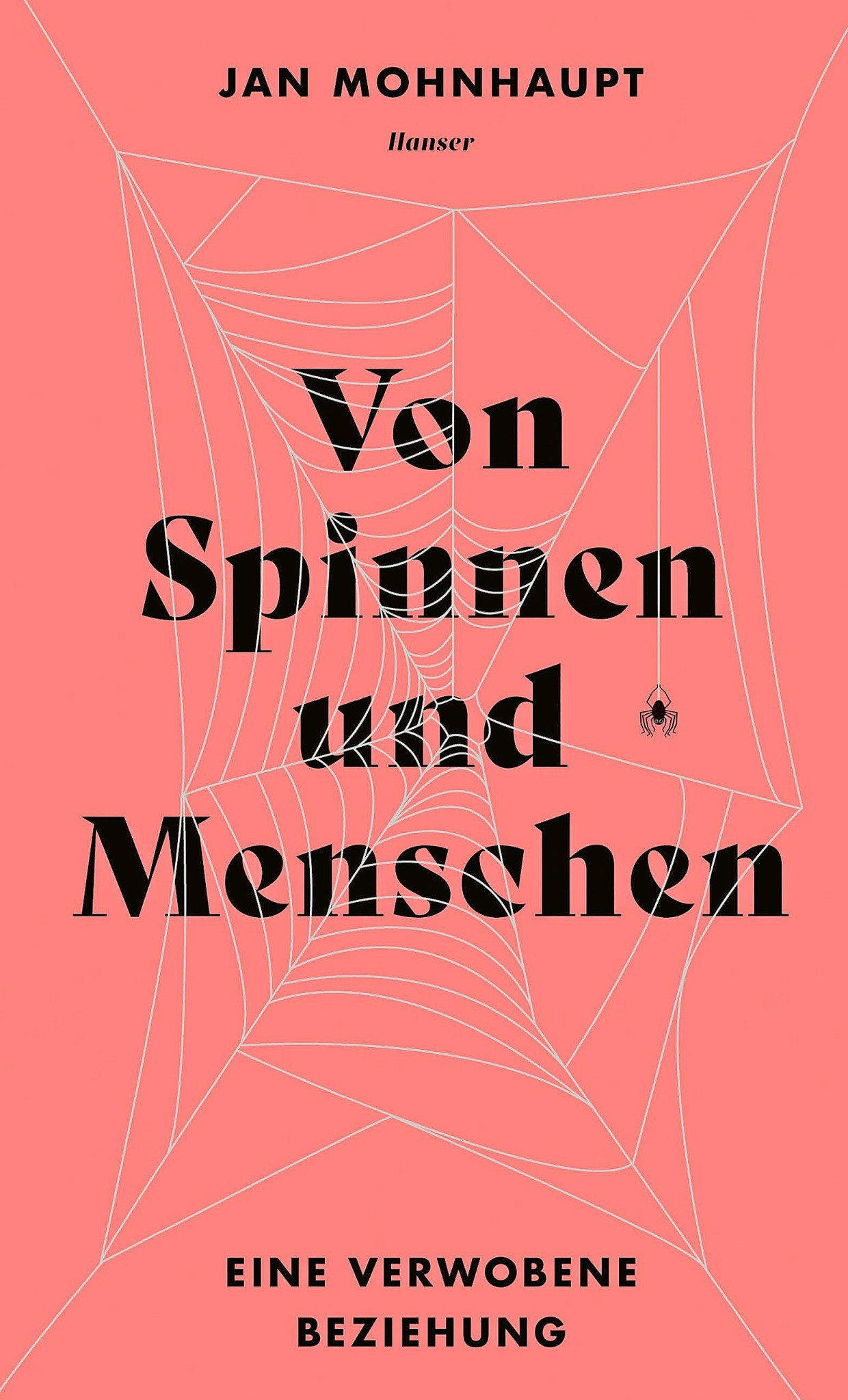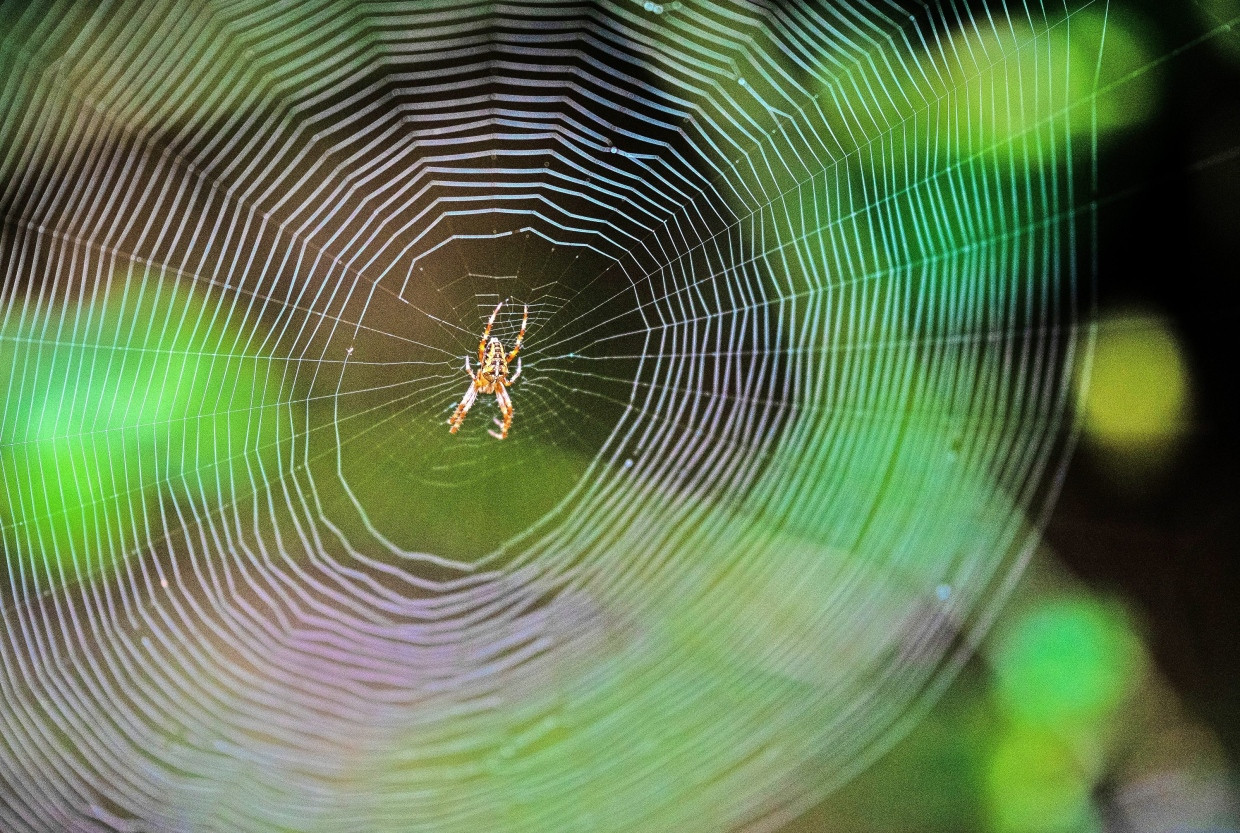Hoch ließen sich die Bücher stapeln, die über Hunde und Katzen geschrieben worden sind. Die zwei domestizierten Prädatoren gelten als unsere liebsten tierischen Begleiter. Fast keine Aufmerksamkeit haben bisher dagegen jene Tiere bekommen, die seit frühester Zeit eng mit Menschen zusammenleben und auch heute nahezu jedes Haus besiedeln – Spinnen.
Vor Spinnen schrecken viele Menschen instinktiv zurück. Von einer Beziehung zu ihnen kann nicht die Rede sein. Sie werden höchstens geduldet, oft aber einfach weggesaugt. Auch was ihre Rolle in der Natur betrifft, sind Spinnen, die es seit 300 Millionen Jahren auf der Erde gibt, eine Leerstelle. Zur Rolle von Vögeln, Bienen und Bäumen in den Ökosystemen kursiert einiges an Allgemeinwissen. Dagegen dürften Antworten auf die Frage, wozu die weltweit mindestens fünfzigtausend verschiedenen Spinnenarten eigentlich gut sind, meist einsilbig ausfallen.
Zwei Monographien, eine von Jan Mohnhaupt, die andere von Lothar Müller, setzen nun dazu an, das zu ändern. Die Biologie der Tiere spielt in beiden Büchern eine Rolle, aber die Betrachtungen gehen weit darüber hinaus. Mohnhaupt schreibt, Spinnen hätten ihn schon in seiner Kindheit fasziniert: „Diese ästhetischen Jägerinnen, die sich so elegant auf ihren acht Beinen durch ihre Netze und Gespinste bewegten und darin den Insekten nachstellten, zogen mich magisch an: Ich lauschte dem Summen der Stubenfliegen, wenn sie sich im Fadengewirr verfingen, schaute zu, wie die Jägerinnen ohne Hektik herbeikamen, die Beute mit ihren Beinen packten und drehend einsponnen, um sie dann mit einem Biss zu töten.“
Auf der dunklen Seite der Macht
Das Buch beginnt mit der Geschichte einer Vogelspinne namens Alpha, die der Autor in jungen Jahren zur Haltung im Terrarium bekommen und mit der er über ein Vierteljahrhundert hinweg an wechselnden Orten zusammengelebt hat, bis er schweren Herzens ihrem langsamen Dahinsterben ein Ende bereitete. Schnell wird es grundsätzlich, ja philosophisch: Wie hat diese Spinne über die Jahre wohl ihn wahrgenommen, fragt er, wie sah ihre Perspektive auf die Welt aus?

One might initially wonder why Mohnhaupt describes the spider as a “powerful actor” that “influenced human history.” He artfully develops what this means in various chapters, which, in addition to the natural history aspects, deal with how spiders' webs and structures have rubbed off on our architecture and material research, how spiders have become farm animals with silk, and what role they play in the colonization of inhospitable areas Living spaces play – and what astonishingly great significance they have had throughout cultural and art history.
Spiders traditionally don't do well with us. In his Metamorphoses, Ovid reports about the mortal weaver Arachne, who was so talented that she surpassed the goddess Pallas Athene in skill – and was turned into a spider by her as punishment. In the early modern period, the physician Paracelsus drew a “diabolical connection” between female sexuality and the spider, claiming that the animals came from women's menstrual periods. “Much earlier than the octopus, the spider was assigned a place on the dark side of power in Western culture,” writes Mohnhaupt. The National Socialists took this to the extreme by portraying the hated “world Jewry” as a spider and the cause of all evil.
Between disgust and fascination
But Mohnhaupt also offers positive judgments in his entertaining excursions into intellectual history. In the Middle Ages, the spider's web was praised as a miracle of divine creation; the French philosopher Michel de Montaigne even believed that animals were superior to us humans in many ways. The Russian goalkeeper Lev Yashin was called the “black spider”, and a reference to the “most well-known positive spider figure” named Spider-Man should not be missing.

The ambivalence in the human view of the spider world makes Mohnhaupt's book an insightful read. The author does go overboard stylistically at one point or another, for example when he tells indigenous myths about spiders from the first-person perspective of an animal. But this is made up for by the wealth of source information spread out over more than forty pages at the end of the book. They provide just as detailed information about biology as they do about historical and cultural aspects.
Lothar Müller's style is less experimental, but no less worth reading. He counters today's indifference towards spiders by saying that “hardly any group of animals is more diversely woven into the myths, legends and demonologies of all cultures.” For few animals, “the amplitude of the affects between disgust and fascination is greater.”
The spider as a metaphor
Müller spends longer on individual subjects than Mohnhaupt, for example when he tells the legend of how a spider helped the Scottish liberation fighter Robert the Bruce make the right decisions in his fight against the English, or when he explains in detail the impact of the Arachne legend right through to the works of Karl Marx. Particularly successful is the chapter about how no one in Europe in the late seventeenth and early eighteenth centuries believed the naturalist Maria Sibylla Merian that she had seen a spider eating birds during her expedition to Suriname. Merian immortalized her observation in a colored panel in her work “Metamorphosis Insectorum Surinamensium,” which Müller considers to be the most important media representation of spiders in terms of its impact.

Male naturalists nevertheless made fun of the image. “Because she was a woman, Merian was accused of being gullible towards the indigenous people, and of the indigenous people themselves being incapable of rational-empirical perception of nature due to their bias in mythical-magical worldviews,” writes Müller, recounting with relish how in 2017 a biologist was one to The then unknown bird-eating spider from Peru was named Avicularia merianae for the naturalist's complete rehabilitation.
Müller's explorations of literary history are similarly instructive, from the early work of the horror genre, the book “The Black Spider” by the Swiss pastor and writer Jeremias Gotthelf, to Tolkien's Shelob, the guardian spider on the way to Mordor, to the sequel novel “The Spider's Web”, which remains in fragments. by Joseph Roth. The latter “turned the metaphor popular in anti-Semitic pamphlets against its authors and applied it to a ethnic-anti-Semitic network that he had modeled on the real organization Consul,” writes Müller – and in doing so once again underlines the ambivalence of the spider as a metaphor.
Is it just a coincidence that two books dealing with the natural and cultural history of spiders appear almost at the same time? Perhaps after all the dog and cat literature, a turn to this neglected group of animals was overdue. Both books are recommended, and one is tempted to say that the authors succeed in spinning a wide web of references and anecdotes and captivating the reader.
Lothar Müller: “Spiders”. A portrait. Matthes & Seitz Verlag, Berlin 2024. 151 pages, illustrations, hardcover, €22.
Jan Mohnhaupt: “Of spiders and people”. An interwoven relationship. Hanser Verlag, Munich 2024. 256 pages, illustrations, hardcover, €24.








